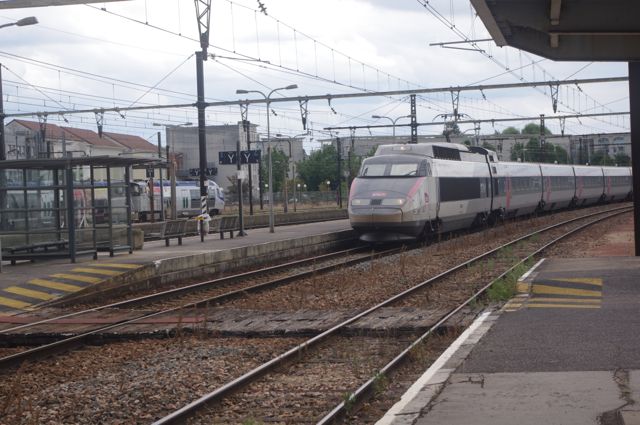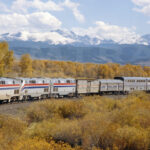How It Could Be/Should Be.
UPDATE: My computer problems seem to be dissipating all by themselves, so I am cautiously optimistic that I’ll be able to continue with these posts. At any rate, we shall see. Your patience is appreciated.
Yesterday afternoon, I wandered over to the railway station here in Chalon-sur-Saône to see what might be going on. Bear in mind, this is not a particularly big city–the population is about 50,000–and it was a Sunday. Not surprisingly, there was quite a lot of activity.

First of all, when I showed up there were probably 30 people in the station itself or on one of the platforms. According to the electronic board, six trains were scheduled to show up within the 90 minutes. Two were the high-speed TGVs–one heading to Paris, the other coming from Paris and heading south to Lyon. The other four trains were “locals”, heading for nearby towns or cities.
All were complete “train sets”. That is, the individual rail cars don’t come apart unless there’s some extensive repair that has to take place. The TGV consist included seven coaches (two first class, five second class), what we would call a café/lounge car, and a power car at each end, each with a pantograph drawing electrical power from the overhead catenary. I don’t know how fast these two trains will be going after they leave Chalon-sur-Saône, but they’re capable of running just about 200 miles per hour.
The local trains are also one train set, are diesel powered, and they too have a power unit at each end. Well, truthfully, I’m not sure that both of those units actually generate power. It could be–as is the case with the Amtrak trains running between Los Angeles and San Diego–that power comes from just one of the units, meaning that half the time, the engineer’s controls are operating the diesel motors at the opposite end of the train.
Each of the local trains offered first class seating in the rear portion of the power cars; the other three cars we designated as second class. The truth is–at least on these trains–there really isn’t that much difference between the 1st and 2nd class seats.
The platform areas are in need of some cosmetic work, mostly repairs to the concrete platforms and rust removal and repainting most of the rest. The station itself apps in good shape. Two people were on duty to provide information and sell tickets, a coffee shop was open and doing business, and there were two or three SNCF employees working a myriad of other jobs, including assisting with the loading and unloading of passengers and baggage.
In other words, a smallish town, on a Sunday, and twenty-some trains were coming and going throughout the day, heading for even smaller towns just a few miles away or whisking other folks off the their nation’s capital city at 200-plus miles an hour. Pretty nice, eh?



